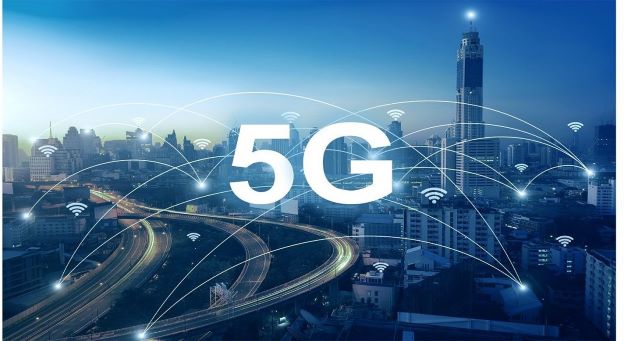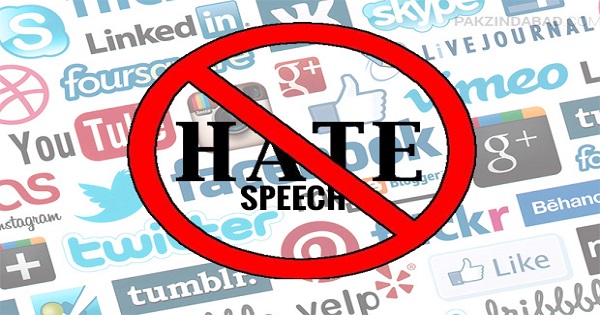Telecom
Ericsson Forecasts Global 5G Subscriptions to Reach 1Bn by Year-end

Despite being relatively new technology, fifth-generation (5G) subscriptions are expected to reach one billion globally by the end of 2022, breaking into the five billion mark by 2028.

For Sub-Saharan Africa, however, 4G will continue to be the main contributor to new connections up to 2028, accounting for more than half of all mobile subscriptions at that time.
This is based on forecasts from the November Ericsson Mobility Report, released yesterday.
The bi-annual report looks back at the growth of the wireless industry in 2022 and reveals key predictions looking forward to 2028.
While Sub-Saharan Africa’s economy is projected to be one of the fastest-growing regions globally, sustaining growth in the telecoms industry, legacy networks still dominate.
According to the report, 2G connections still account for about half of the total subscriptions, but these are projected to decline as service providers migrate subscribers from 4G and 5G.
“Despite its early stage, the 5G journey has begun in Sub-Saharan Africa in the more mature markets such as South Africa, Nigeria and Kenya. 5G subscriptions are projected to constitute around 14% of all mobile subscriptions by the end of 2028.”
The Ericsson report notes that as Sub-Saharan Africa service providers migrate their subscribers from legacy networks, the growth in 4G and 5G will continue at pace.
“5G is forecast to be the strongest-growing segment, as service providers explore various service offerings requiring high bandwidth and low latency.
“Additionally, availability of a wide range of 5G devices at attractive price points will drive uptake of 5G subscriptions.”
The next-generation network is tipped to open new opportunities for smart cities, businesses, healthcare, manufacturing and autonomous vehicles.
In the manufacturing industry, 5G offers manufacturers the chance to build smart operations and take advantage of technologies such as automation, artificial intelligence, augmented reality for troubleshooting, and the internet of things.
From a global perspective, the report indicates service providers continue to deploy 5G, with 228 having already launched commercial 5G services globally.
In addition, deployment of 5G standalone networks also continues, with around 35 service providers having deployed or launched 5G standalone in public networks.
“The most common 5G services launched by service providers for consumers are enhanced mobile broadband, fixed wireless access (FWA), gaming and some AR/VR-based services.
“5G subscriptions grew by 110 million during the third quarter to around 870 million, and that number is expected to reach one billion by the end of 2022.”
Leading 5G subscriptions are North America and North East Asia, which are expected to have the highest 5G subscription penetration by the end of 2022 at around 35%. They will be followed by the Gulf Cooperation Council countries at 20% and Western Europe at 11%.
“In 2028, it is projected that North America will have the highest 5G penetration at 91%, followed by Western Europe at 88%. By the end of 2028, five billion 5G subscriptions are forecast globally, accounting for 55% of all mobile subscriptions.
“5G subscription uptake is faster than that of 4G following its launch in 2009, with 5G expected to reach one billion subscriptions two years sooner than 4G.”
Key factors driving this acceleration, notes the report, is the availability of devices from several vendors, with prices falling faster than for 4G, and China’s early 5G deployments.
“5G will become the dominant mobile access technology by subscriptions in 2027. Subscriptions for 4G continue to increase, growing by 41 million during Q3 2022 to around five billion.
“4G subscriptions are projected to peak at 5.2 billion by the end of 2022, and then decline to around 3.6 billion by the end of 2028 as subscribers migrate to 5G. During the quarter, 3G subscriptions declined by 41 million, while GSM/EDGE-only subscriptions dropped by 44 million and other technologies decreased by about six million.”
FWA connections will reach 300 million by 2028, according to the report. FWA provides primary broadband access through mobile network-enabled customer premises equipment.
The mobility report indicates more than three-quarters of service providers surveyed in over 100 countries are now offering FWA services.
In addition, nearly one-third of service providers are now offering it over 5G, compared to one-fifth a year ago. “During the last 12 months, the number of service providers offering 5G FWA services has increased from 57 (19%) to 88 (29%).”
In 2022, 5G FWA also arrived in emerging markets, states the report.
“Almost 40% of the new 5G FWA launches in the past 12 months have been in emerging markets. 5G FWA has arrived in populous countries such as Mexico, South Africa, Nigeria and the Philippines.”
Ericsson’s forecasts echo industry reports that FWAadoption is at a tipping point.
Last year’s Africa Digital Infrastructure Market Analysis report highlighted operators were deploying FWA, to meet the growing broadband service demand, particularly in the areas outside fibre coverage.
The report showed the highest growth was recorded during the first half of 2021 in regions with the lowest fixed broadband penetration, namely Middle East and Africa, Central and Eastern Europe, Asia Pacific, and Central and Latin America.
Telecom
Paradigm Initiative Warns of AI-Driven Hate Speech, Urges Global Tech Reform

As the world commemorates the International Day for Countering Hate Speech, Paradigm Initiative (PIN) is calling on big tech companies to intensify their efforts in combating online hate speech and ensuring respect for fundamental human rights.

PIN’s 2024 Londa report highlights the widespread prevalence of hate speech online. In Angola, for instance, at least 25 content removal requests were made in connection with hate speech, harassment, and political misinformation. Globally, the consequences of unchecked hate speech have been severe—ranging from incitement to violence and heightened ethnic tensions to the targeting of vulnerable communities, including minorities, women, and foreigners.
Nigeria witnessed a tragic example in 2018 when a Facebook post showing a massacre in Plateau State was viewed more than 11,000 times, triggering ethnic conflict and resulting in fatalities. In South Africa, inadequate content moderation has worsened the problem, while in Ethiopia in 2021, a false Facebook post led to the killing of a man wrongly implicated in a scandal. India saw a surge in hate speech during its elections.
PIN notes that actors behind hate speech are becoming increasingly sophisticated, often leveraging technologies like artificial intelligence to boost visibility. Meanwhile, existing moderation systems—especially for non-English content—struggle to keep up.
Bridgette Ndlovu, PIN’s Partnerships and Engagements Officer, said, “Hate speech online is a direct attack on the dignity and safety of individuals.” She urged technology companies to adopt transparent and effective moderation strategies and to prioritize human rights in their operations.
The spread of hate speech raises complex challenges for lawmakers. Governments are trying to regulate harmful content such as misinformation and harassment while protecting freedom of speech. However, PIN warns that hate speech laws should not be misused to arbitrarily detain human rights defenders or stifle dissenting voices.
To address these concerns, PIN recommends that tech companies invest more in moderating non-English content to reflect local nuances, improve transparency around government takedown requests, promote digital literacy—particularly in underserved regions—and conduct regular human rights due diligence, aligned with the United Nations Guiding Principles on Business and Human Rights.
Telecom
Moniepoint Deepens Commitment to Africa’s Future Through Education and Innovation

Moniepoint Inc, one of Africa’s leading financial institutions partnered with the Mega Impact Foundation to support the 5th edition of the NextGen Connect Interschool Oratory Competition in Asaba, Delta state. This collaboration showcases Moniepoint’s unwavering commitment to youth empowerment and human capital development across the African continent.

The competition, which was held commemoratively to celebrate this year’s International Day of the Boy Child, brought together SS2 students from across Delta State to address the critical theme: “The Role of Financial Inclusion and Technology in Shaping a Brighter Future for Young People in Africa.” Moniepont has received critical acclaim over its core mission of advancing financial inclusion through innovative digital financial technology solutions and payment services..
The oratory competition showcased exceptional talent among Nigeria’s youth, with Otovo Praise of Crystalloid International School emerging as the champion. His outstanding performance earned him a full-year scholarship through the Tosin Eniolorunda STEM Foundation, reflecting Moniepoint’s philosophy of investing in educational excellence. Second-place winner Audi Innocent of St Patrick’s College received ₦300,000, while third-place winner, Asher David of Glorious Kids Academy was awarded ₦200,000.
“At Moniepoint, we believe that driving sustainable innovation begins with future-proofing and expanding the talent pool by empowering the next generation with the tools that they need to succeed especially basic literacy skills which remain fundamental pillars in socio-economic development,” said Tosin Eniolorunda, CEO Moniepoint Inc. “These young voices represent the future of African leadership, and their insights into financial inclusion and technology demonstrate the remarkable potential that exists within our communities. Through our various educational and developmental initiatives such as the CAD/CAM lab we donated to OAU last year or the Moniepoint DreamDevs programme, we are betting big on an investment in Africa’s future.”
The initiative extends beyond monetary rewards, creating meaningful platforms for young people to express their ideas on a global stage. Through its support of the NextGen Connect Conference and Tech-In-School conversations, Moniepoint is fostering an environment where youth can develop critical thinking skills, build confidence, and engage with pressing societal issues.
In her remarks, Founder, Mega Impact Foundation, Florence Ogonegbu said that “we reaffirm our commitment to building an Africa where every young person has simplified access to sustainable education, capacity building, and empowerment. By leveraging technology and local initiatives, we are creating platforms that enable our youth to thrive and transform their communities.
“Together with partners like Moniepoint, we are not just shaping futures—we are driving a movement for social development that will resonate globally. Every boy, every young person, deserves the opportunity to unlock their full potential and drive lasting impact across our continent.”
The competition received additional support from the Ministry of Women Affairs and Social Development, Delta State, highlighting the collaborative approach required to nurture young talent effectively.
Telecom
Zoho Unveils Zia Hubs to Harness AI Insights from Unstructured Business Data

Zoho, a global technology company, today launched Zia Hubs, a solution within Zoho WorkDrive that brings new forms of unstructured business data into the company’s broad portfolio of applications and AI services. Using Zia Hubs, organisations can now present any type of business content to Zoho’s powerful capabilities and services—including agentic AI, comprehensive analysis, and accurate, unified search—regardless of file format or structure.

“According to IDC, 80 percent of business data is unstructured,” said Kehinde Ogundare, Country Head, Zoho Nigeria. “Most unstructured data is text-based, meaning pertinent information lives within email conversations, social media posts, word processor documents, or audio and video transcripts. With Zia Hubs built into the full product suite, Zoho can provide customers with a deeper integration than any comparable software platform and nearly limitless potential uses for their data.”
Deeper Intelligence Accessing More Customer Data
Launching as part of Zoho WorkDrive, Zia Hubs brings content intelligence to the company’s unified content management and collaboration platform. Designed with a high level of user control over what content AI is allowed to access, Zia Hubs enables users to organise project or task-specific content into dedicated hubs within WorkDrive. Each hub serves as a focused space where Zia, Zoho’s flagship AI, can understand and act on the content stored within. This includes a wide range of formats such as PDFs, documents, videos, and audio files.
Zia Hubs automatically organises uploaded content by grouping related information—such as section headings, supporting text, and visuals—to preserve context. For video and audio files, Zia generates transcripts and links key moments to relevant topics, making it easier to pinpoint exactly where something was said.
With Zia Hubs, users can surface the most relevant answers when asked a question, even across different content formats. Each response includes clear citations that link back to the original content, whether it is a document, spreadsheet, image, or a specific moment in an audio or video file.
Organisations can also create custom workflows with Zoho Flow, automating document storage processes for particular projects or specific teams. This ensures that Zia always has access to the latest necessary documents automatically.
Furthermore, content from third-party software—such as Docusign PDFs, RingCentral call logs, Zoom video files—are all readable by Zia, and can be automatically placed into a hub by building a workflow with Zoho Flow.
From Intelligent Content to Intelligent Action with Zia
Zia Hubs is a foundational element of Zoho’s long-term AI strategy. It lays the groundwork for a future where intelligent agents can act contextually on content across the company’s entire product suite. With full ownership of its technology stack spanning more than 55 products, Zoho is uniquely positioned to help organisations unlock deeper value from their business content compared to competitors.
Potential use cases for Zia Hubs include: a legal team’s content hub hosting a case’s relevant files: court files, correspondence, and research, allowing a lawyer to have Zia provide summaries with citations without having to manually scan lengthy files to gain insights; a company’s support center placing call logs into a hub, then querying Zia to identify trends, like, “Have we received an increase in calls regarding specific issues?”
Future updates to Zia Hubs will enable it to identify structured information within unstructured files and trigger specialised agents tailored to specific business needs. This will further establish Zia Hubs as the central content intelligence layer that activates AI-native workflows across the full Zoho ecosystem.

 Telecom2 days ago
Telecom2 days agoALTON Clarifies on Migration to End-User Billing for USSD Services

 Telecom3 days ago
Telecom3 days agoGSMA, Mobile Industry Call for Strengthened Action to Advance Child Online Protection in Africa

 News2 days ago
News2 days agoDigital Africa Global Consult, NDPC Partner on Ground-Breaking “Nigeria Data Challenge” Initiative

 General News3 days ago
General News3 days agoTD Africa, HP Strengthen Partnership to Advance Africa’s Tech Ecosystem

 E-Financial2 days ago
E-Financial2 days agoNigerian Stock Market Suffers ₦183 Billion Loss Amid Profit-Taking

 News2 days ago
News2 days agoDStv Rewards Loyal Customers with Free Package Upgrades

 Telecom2 days ago
Telecom2 days agoLagos Future Conference 2025: Stakeholders Call for Digital Responsibility and Grassroots Innovation

 General News2 days ago
General News2 days agoAfrican Parliamentarians Seek Answers from Telcos on Quality of Service




























